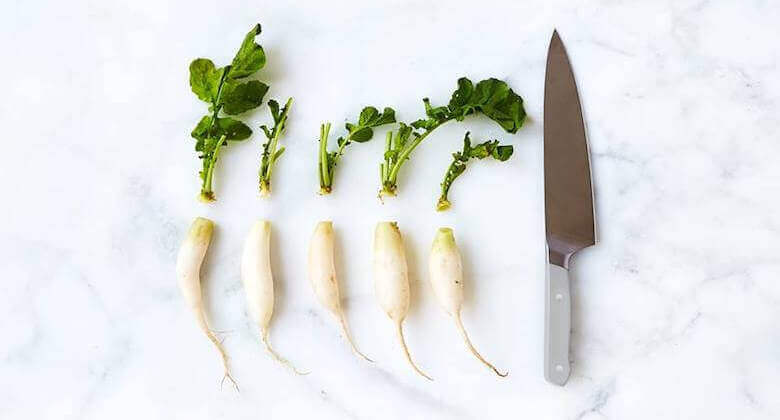
Editor’s note: We’re chronicling how tech is changing the way we eat and drink as we lead up to this fall’s Food Loves Tech. Our annual deep dive into appropriate food and ag technologies returns to Industry City on November 2–3, 2018 and you can get $20 off the regular admission price while our early bird special lasts.
A well-supplied kitchen calls for a toolbox of essential wares, primary among which are knives. Yet a certain mystique surrounds knives that can be intimidating for the uninitiated. Take the pricing, for instance. A knife set on Amazon ranges from $5.74 to $2,295.95. Questions abound. Just how correlative is the price to quality? What exactly is one supposed to look for in a blade, a handle? How many different knives are essential? And what’s with all the mixed messages re: sharpening? That’s before even getting to questions of chopping, cutting and peeling techniques. With all these variables, how is the aspiring novice to proceed, or even the skilled chef on a budget?
Enter Misen, a Brooklyn-based online kitchenware company, who entered the cutlery scene with a splash in 2015. Humbly setting out to create an essentials knife set priced for the masses, Misen soared past their goal, in fundraising and production. Aiming for $25,000 in their original Kickstarter, they raised over a million dollars and created the quintessence of three knives: chef’s, bread and paring—sold together for the nice price of $130.

As intended by their business model, the volume allowed them to hit their price points, while selling directly to consumers further lowered costs by cutting out the middleman.
The name Misen comes from “mise en place,” the culinary term for laying out one’s needed kitchenware in advance of food prep. Rule number one, as the Scouts say: Be prepared.
The 3-piece knife set keeps with other reliable rules, too, like “using the right tool for the job.” Still what’s the point of having the right tools if you don’t know how to use them? Continuing to think of everything, Misen’s set comes with a chart of basic cuts and a simple tutorial starting with preparation of the humble carrot. Misen lays out seven ways to chop them: Large, medium and brunoise dice, Julienne, batonnet, baton and paysan.
The paring knife is geared for peeling, coring, mincing and trimming; the demo this time goes to the humble apple.
Where Misen breaks the rule, however, is in going against the grain of built-in obsolescence: This premium Japanese steel set seems crafted with the next generation in mind and even includes (currently waitlisted) lifetime knife sharpening services to keep their cutting edge long after the purchase date.
A final note: These knives are sharp and their cuts are sure; make certain the person wielding them follows suit. Follow basic safety precautions. Point the blade away from yourself while cutting, making sure no body parts are in the cutting path. When possible, cut on a stable surface (a damp dishtowel beneath a cutting board does wonders for steadying and securing board in place). When not actively using, store knives in a secure location. Beware of balancing them on a drying rack; best practice is to hand wash, hand dry, and stow away for future use.



